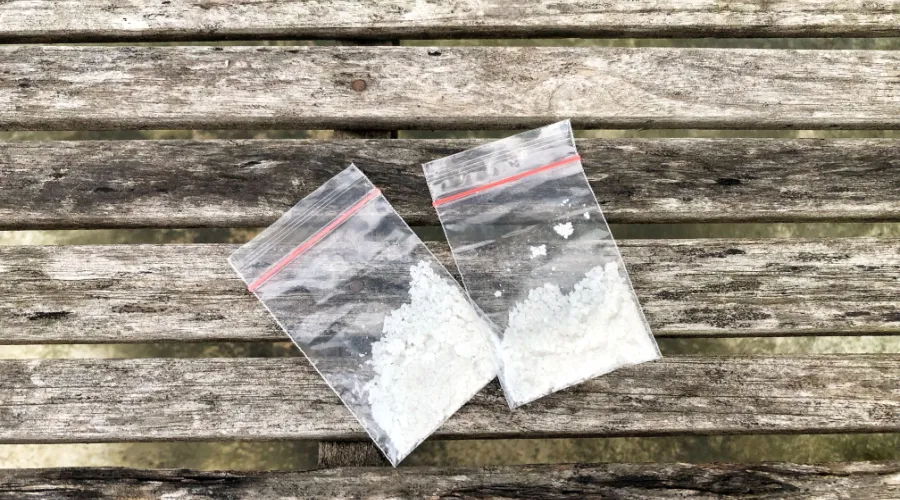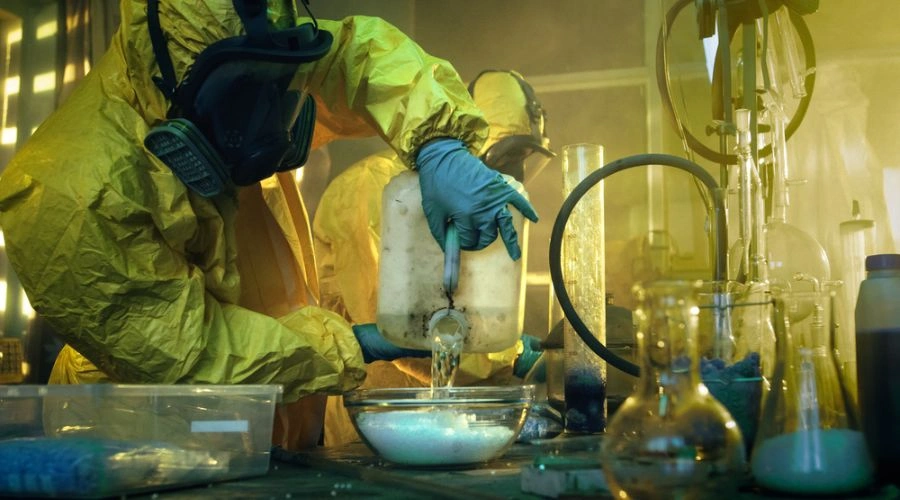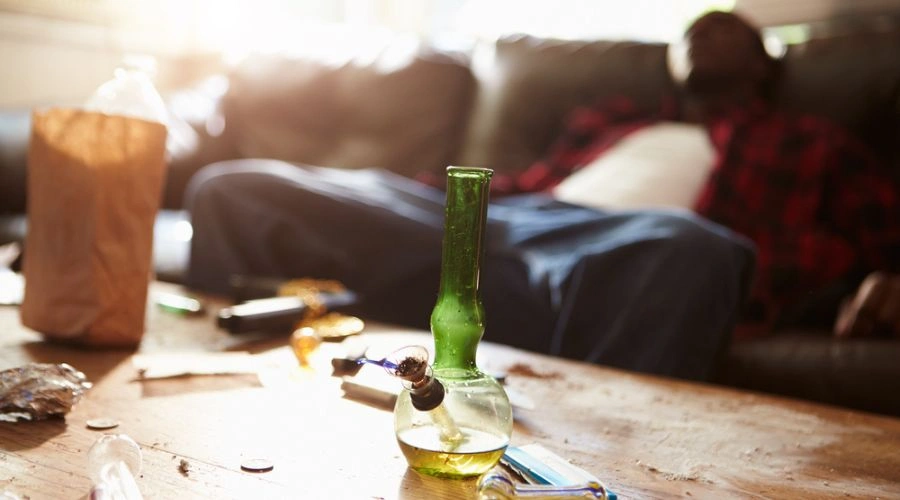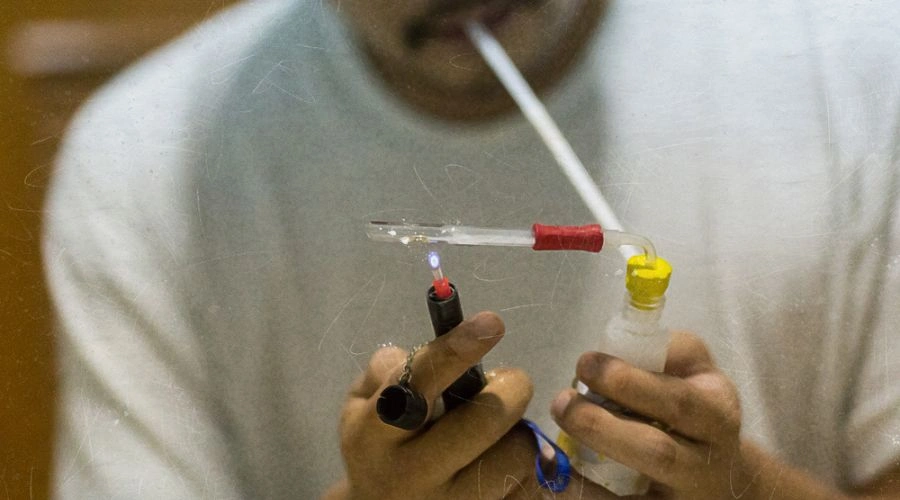Your Guide to Recognizing the Smell of Methamphetamine
From drain cleaner and battery acid to antifreeze, nail polish remover, and lantern fuel, ingredients like these make it not-so-surprising that meth has devastating effects on the body and mind. In a baggie, it can be easily confused with other substances but when smoked, the distinct odor can be a useful tool for identifying meth use in a friend or loved one.
So, what does meth smell like when smoked? This guide will explore meth’s distinct aroma and odors associated with meth production. You’ll also find additional information on recognizing signs of meth use in a loved one and reaching out to Ingrained Recovery for more help.
Identifying Methamphetamine

The reason people continue using meth despite its dangerous ingredients is because it’s a highly addictive stimulant drug. It has potent effects on the body and mind, resulting in high levels of alertness, increased energy, and intense euphoria.
There are two common types of meth; powdered which is snorted and crystalline which is smoked. Of the two, crystal meth is the most potent. People are more likely to smoke the drug because it causes the most intense high, resulting in an unmistakable meth smell.
Identifying meth starts with knowing what it looks like, should you come across any. Crystal meth might be translucent, clear, or bluish-white. It’s commonly compared to crystals or broken glass. While meth can be injected, snorted, or smoked, it is smoking the drug that releases the distinct odor that can be used to identify meth substance abuse in a loved one.
Get Effective Detox and Rehab Options
Find Help At Ingrained Recovery
What Does Meth Smell Like When Smoked?
Smoking methamphetamine produces a harsh, unmistakable odor. The smell is commonly compared to burning plastic, ammonia, or burnt rubber. It tends to linger long after a smoking session, being overwhelming and unpleasant.
To a trained nose, the odor emitted gives a clue to the chemicals used when making meth. As these dangerous chemicals are heated, they vaporize into the air. Someone who has smelled meth before will easily be able to recognize this strong, distinguishable smell.
Dangerous Chemicals Found in Crystal Meth
Despite the dangerous chemicals found in meth, meth users continue to use it because of the high produced by its many chemicals. Identifying drug smells can be tricky, but the chemicals used leave behind a distinct aroma. Some of the more common chemicals include lithium, red phosphorus, and anhydrous ammonia.
Lithium, found in batteries, smells similar to burnt metal when meth is being produced. Red phosphorus is also used, typically when using cold tablets or similar ingredients. This smell is strong and musty. Last, anhydrous ammonia is a type of fertilizer known for its pungent, acrid smell.
Recognizing these smells can be a useful tool if you suspect meth production. Identifying this is important, especially because the production process emits dangerous chemicals in the air, seeping into the environment and remaining a hazard to human health long after production has finished.
What Does a Meth Lab Smell Like?

Meth labs bring together aromas of all the chemicals used in the manufacturing process, resulting in strong, toxic odors. It’s common to smell a mixture of chemicals, ranging from burnt plastic and solvents to ammonia and odors of rotten eggs.
These odors are not just unpleasant to smell, but the toxic fumes are dangerous to anyone in the room or even the building. There are even instances where children have tested positive for methamphetamine because the odors and fumes settle on surfaces around the house, leading to meth exposure.
If you do notice chemical smells that could indicate a meth lab, be aware of the potential for chemical exposure. Nearby buildings, soil, and air are all at risk depending on the size of the operation.
Does a Meth House Smell Like Cat Urine?
Some people say that meth use is reminiscent of cat urine. This is likely caused by the ammonia-like fumes caused by ingredients used in meth. Cat urine also produces ammonia and byproducts, though it has a distinct smell. You usually won’t be able to detect ammonia specifically from meth production, as it lingers with other chemicals that also have a strong smell. The exception is when it is concentrated in a poorly ventilated area.
While not all meth houses will smell exactly like cat urine, the two odors share some key characteristics due to the presence of ammonia and other chemicals involved in meth production.
Cat Urine vs. Drug Smells
The similarity between the smell of cat urine and certain drug-related odors, like meth, can be confusing, but there are important differences. Both cat urine and the odor of methamphetamine production are caused by ammonia, but they differ in their intensity and the other chemicals involved.
The odors of cat urine come from ammonia and other compounds. Usually, it’s isolated to areas where cat urine might not be noticed. For example, hidden areas or corners of the home. The aroma does not fill the whole house.
Methamphetamine-related smells are much more potent and aggressive. You may detect a meth smell that has ammonia, but it mingles with the harsh odors from other chemicals. For example, you might smell ammonia mixed with rotten eggs, burnt plastic, solvents like nail polish remover, or metals.
By being aware of these differences, it’s easier to know whether you are smelling cat urine or contamination caused by smoking or producing methamphetamine. Of course, looking for the presence of cats is also a good place to start!
Get Accredited Treatment Programs
Find Help At Ingrained Recovery
Are Meth Labs Dangerous?
Meth manufacturing labs are dangerous for more reasons than just the drugs that come out of them. Nearly all the chemicals used to make methamphetamine are flammable and toxic. Since meth is not produced in a sterile, regulated environment, there’s a high risk of fires and explosions. These can be severe, especially when meth is produced in large quantities.
Following a meth lab explosion, corrosive chemicals get everywhere. Anyone caught in their path is likely to experience severe burns, while respiratory issues and other health problems can arise after being exposed to the smoke. Entire homes and warehouses can burn down following such explosions.
According to the Drug Enforcement Administration, producing meth also produces a lot of hazardous waste. In meth labs that have been busted, extensive cleaning and renovations are needed to get rid of toxic residues. This is necessary before anyone can live in these homes or buildings, as long-term exposure leads to severe health problems.
Meth Production and Environmental Contamination
The meth-making process produces unusual waste. Cold medicine, sulfuric acid, and other meth ingredients contaminate air, water, and soil. They also tend to linger, especially in closed environments where meth is typically made. Even months or years later, without extensive amounts of environmental cleanup, homes and buildings used to make meth can not be lived in. This can be an extensive and expensive process, requiring specialized equipment.
Signs a Loved One is Using Meth

Are you worried that a loved one is using meth? While it might mimic addiction to other drugs, people who use meth often experience hyperactivity, erratic mood swings, and sudden changes in their routines. They might hang out with a new crowd or even isolate themselves as they experience hallucinations and extreme paranoia.
Long-term use is extremely dangerous because of the chemicals found in meth and you’ll also notice changes in your loved one’s physical appearance. Some physical signs of meth use include weight loss, skin sores and acne or hair loss from picking habits, excessive sweating, racing heart, and dilated pupils. Meth mouth, resulting in poor gum health, tooth loss, and other problems, is also a common side effect.
The Impact of Using Meth on Mental Health and Behavior
Chronic meth use can also have a devastating impact on your loved one’s mental health. As a stimulant, meth overloads the brain’s dopamine system and makes it hard to experience pleasure unless you are using the drug. This can lead to mental health issues in the future and it also makes it harder to quit using the drug.
Meth is known for mental symptoms like anxiety, paranoia, and psychosis. While paranoid or anxious, it’s not uncommon for them to believe others are “out to get them”. Extended use can also cause delusions, hallucinations, or a total mental break.
Over time, meth also causes brain damage. Your loved one might struggle with memory and experience cognitive decline. The effects worsen with time, making it increasingly difficult for individuals to function normally in their daily lives.
What Should I Do if a Loved One Is Using Meth?
It is hard to address a loved one’s meth use, but it is even harder to ignore the warning signs and health risks. As you approach them, do so with empathy and openness. You should expect that your loved one will deny their meth use or resist getting help. Even when this happens, it’s important to stay calm, avoid shaming them, and take the right steps.
Start by addressing them in a non-judgmental way. Keep the conversation open when asking if they’d like help. It can also be helpful to know how you’d like to approach the conversation beforehand and have resources available, should they agree to treatment. Often, professional treatment is the best route for a highly addictive substance like methamphetamine.
If they do resist, don’t get frustrated. Provide emotional support and let them know that once they are ready, you’ll be there to help in any way that you can.
Convincing Them to Seek Addiction Treatment

Meth can make people paranoid, untrusting, and even less likely to seek addiction treatment than they typically would be. They may be afraid of the recovery process or in denial about the grip that methamphetamine has on them.
Remind your loved one that meth use is standing in the way of healthy relationships, a productive job, and better health. For guidance with this conversation, reach out to Ingrained Recovery for additional support. We can also provide resources to help you convince your loved one to get the help that they need sooner.
Choosing a Rehab Center
Not every rehab center will be a good fit for your loved one’s recovery. Choose a treatment center like Ingrained Recovery for a better approach to meth addiction treatment. Through personalized programs and long-term support, we remain a trusted resource for those struggling with meth addiction.
Up To 100% of Rehab Covered By Insurance
Find Help At Ingrained Recovery
Get Help with Meth Addiction at Ingrained Recovery
The intense high of methamphetamine makes it highly addictive, but you can break free from its grasp. Call Ingrained Recovery for help with meth detox and rehab today. Our compassionate care and evidence-based treatment programs make it possible for clients to overcome even the most addictive substances.

